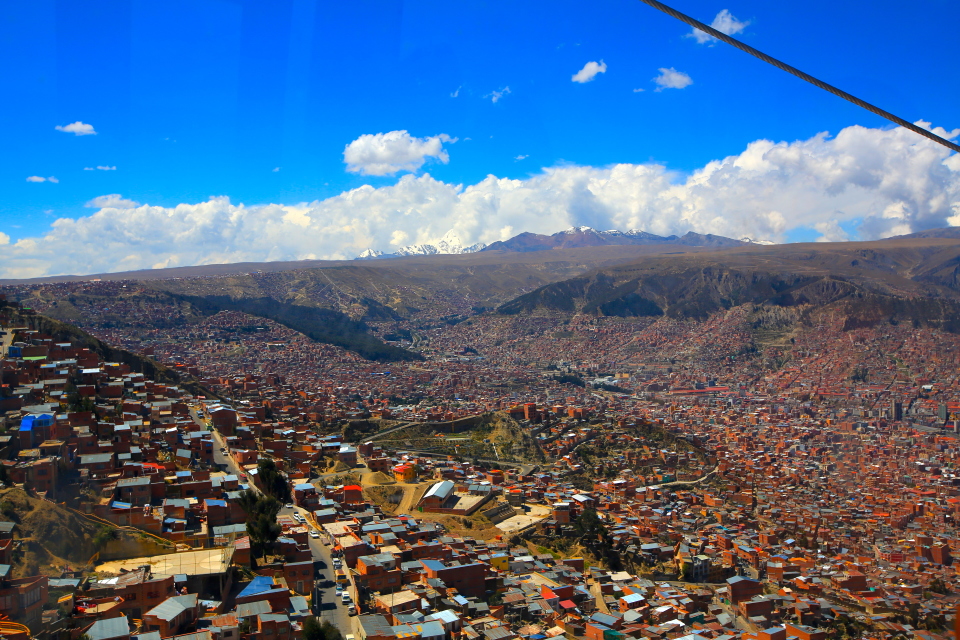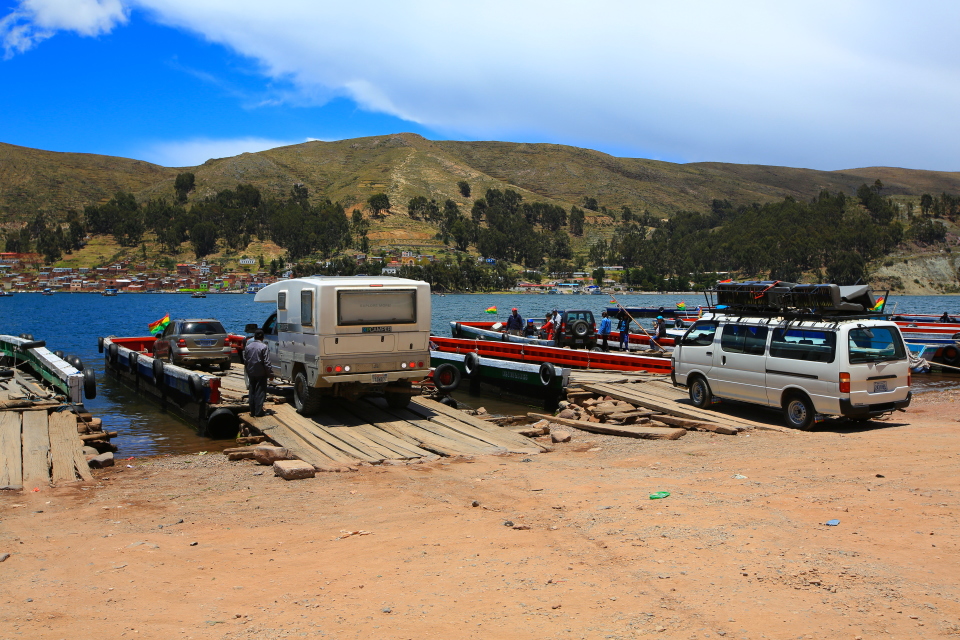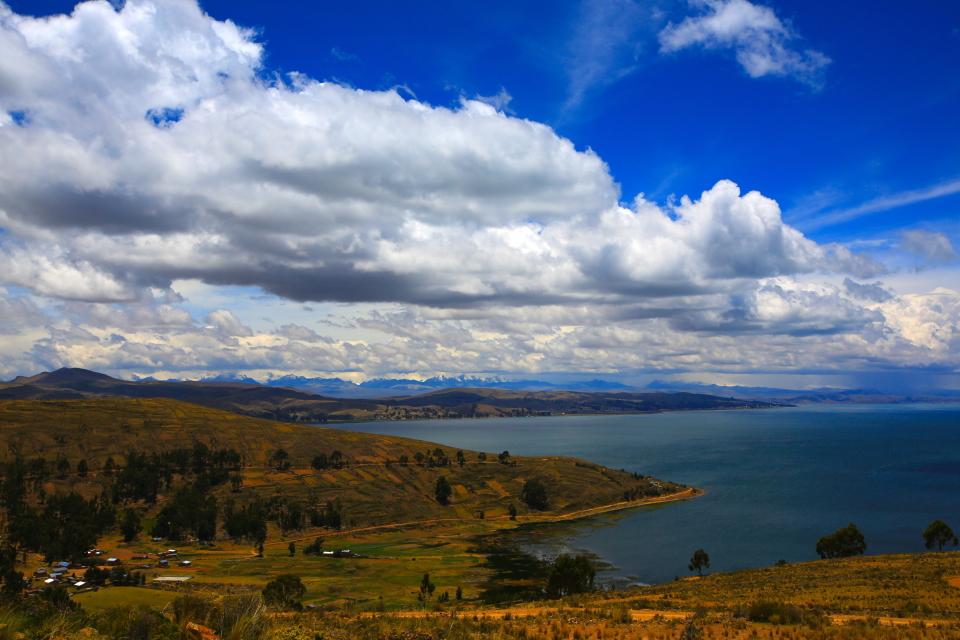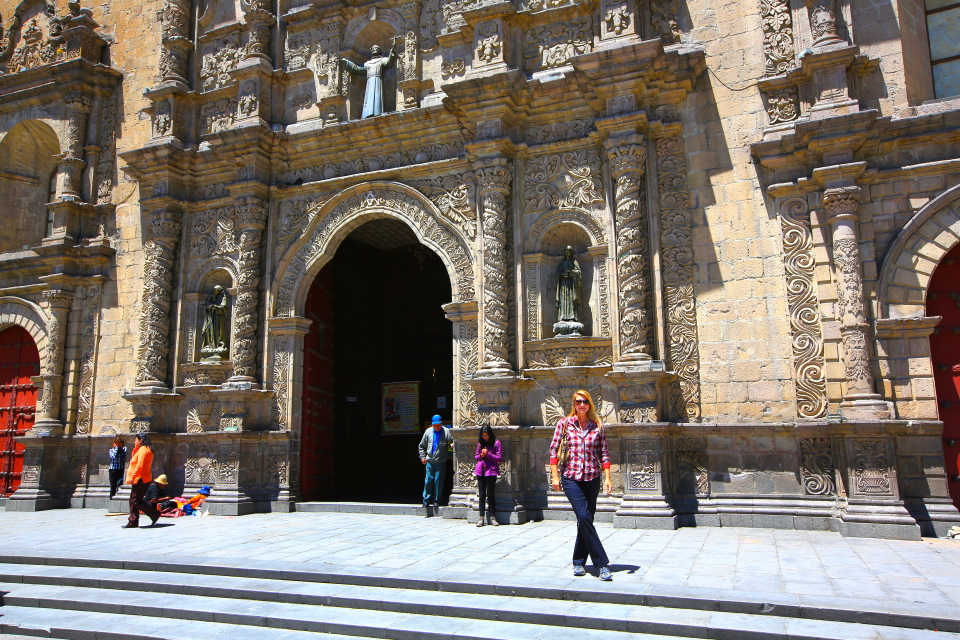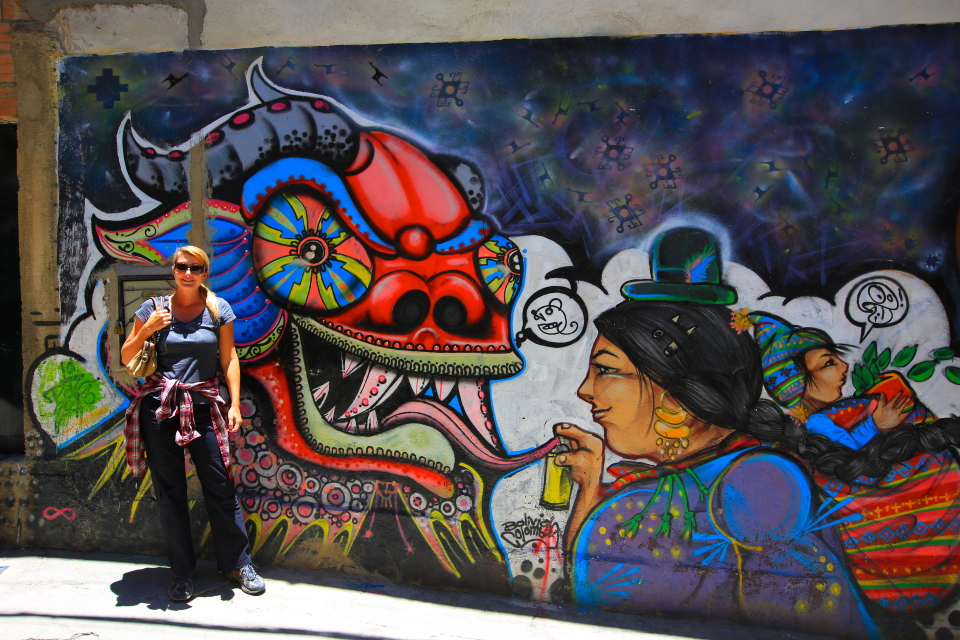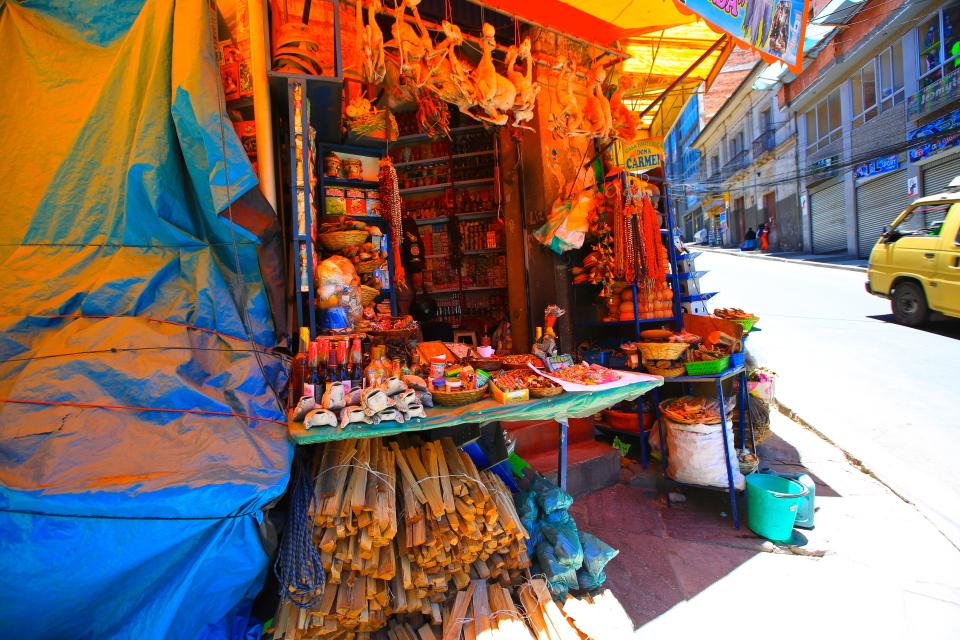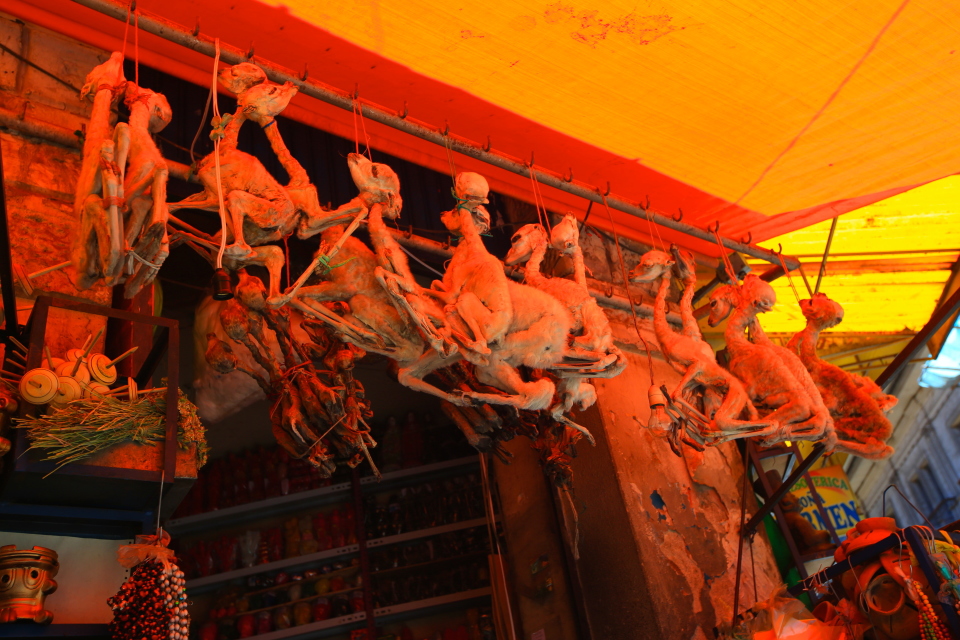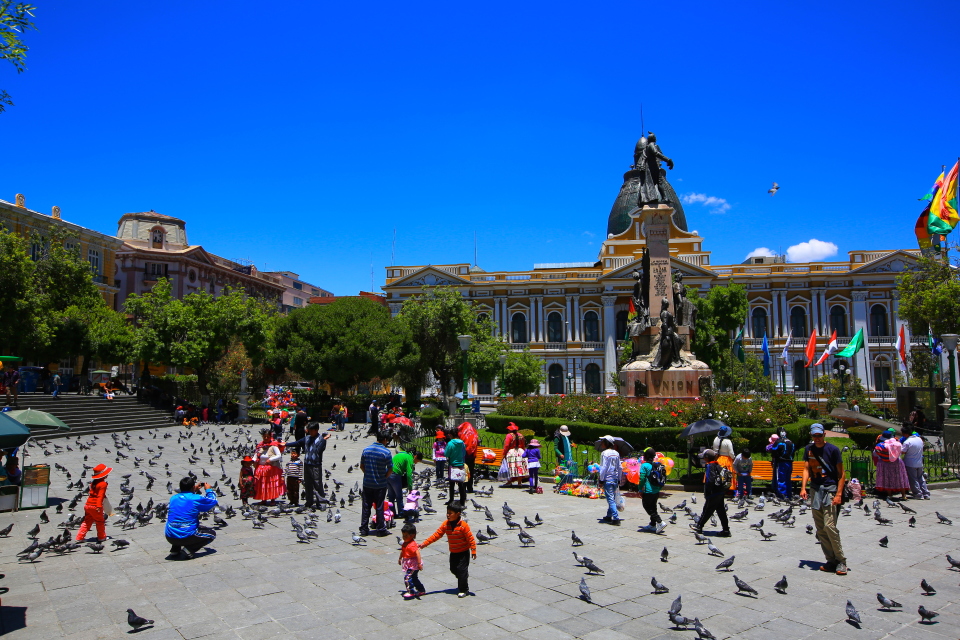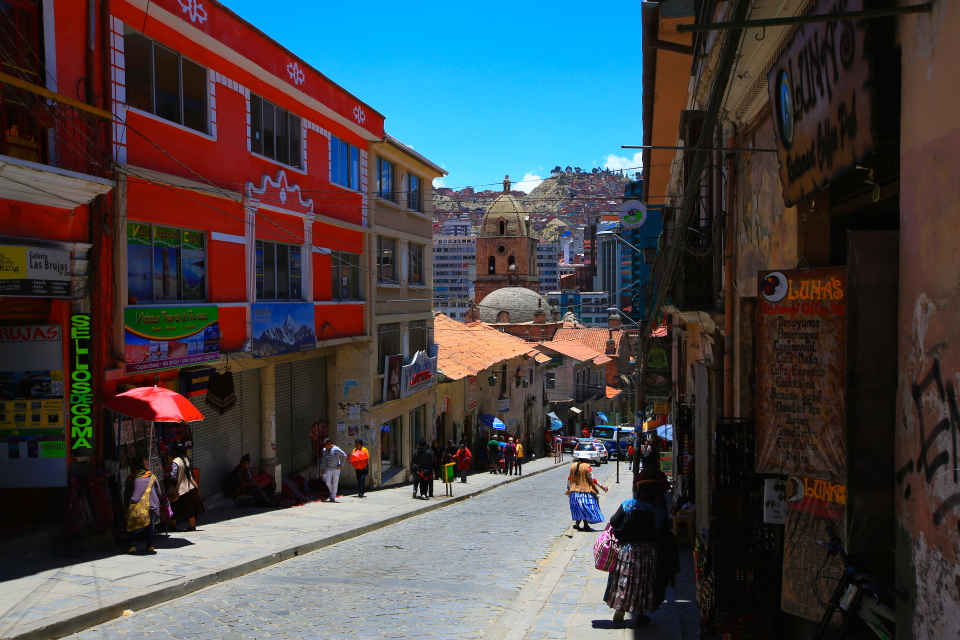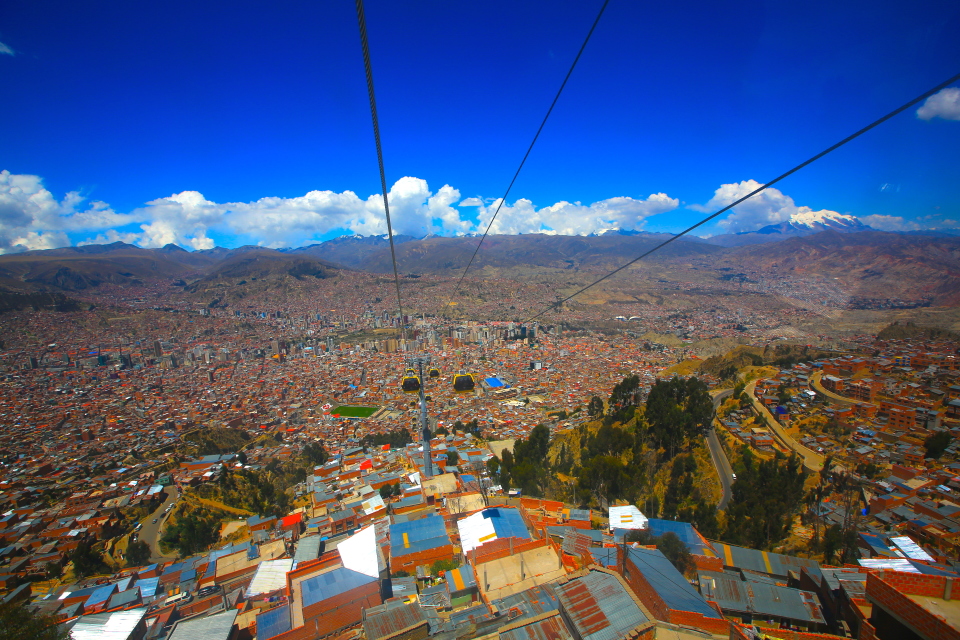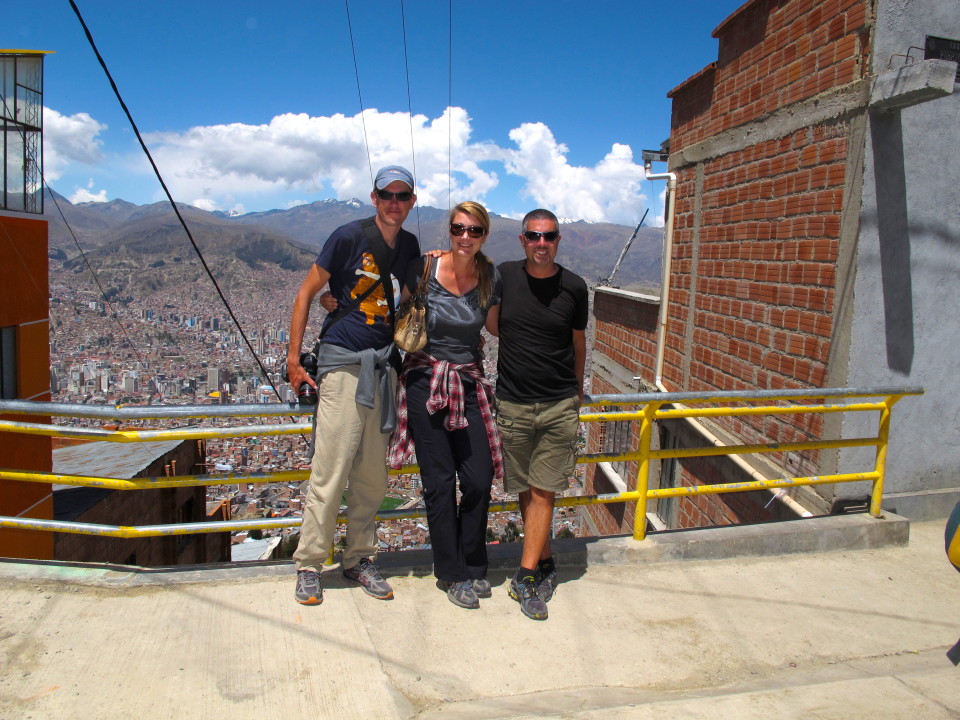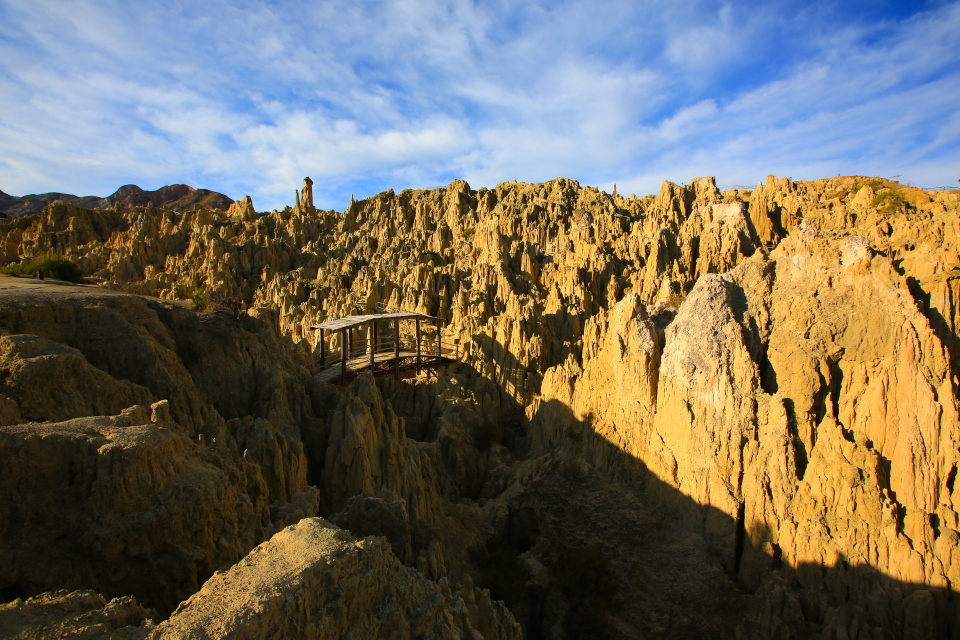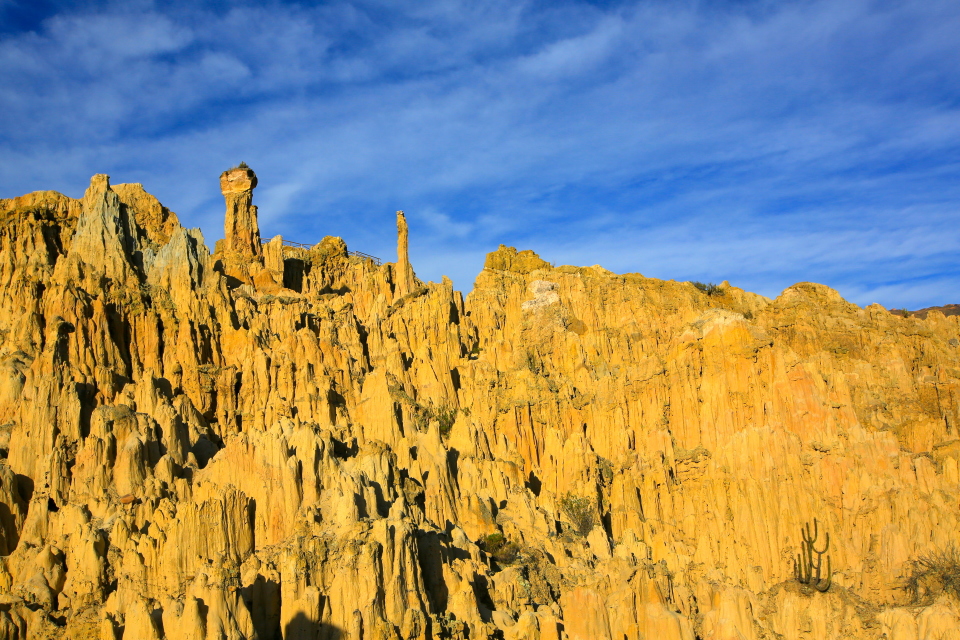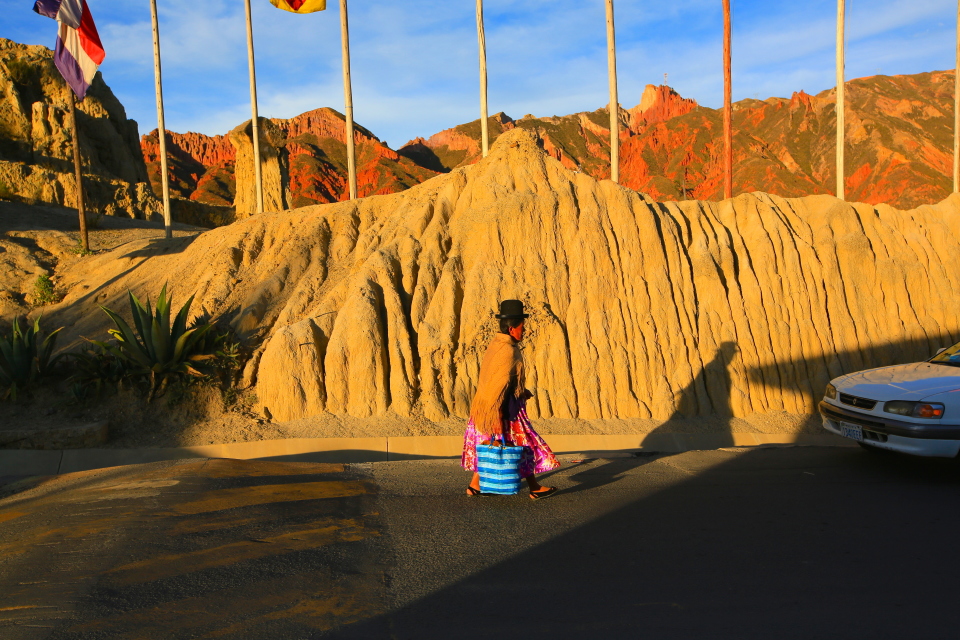When we started this trip, there were four cities that I was worried about driving in and around: Mexico City, Mexico; Bogota, Colombia; Guanajuato, Mexico; and La Paz, Bolivia. I’d heard stories about monster traffic jams, crazy drivers, and maze-like streets that were easy to get lost in and impossible to navigate. Up to this point, I’d managed the hills and tunnels of Guanajuato, I’d navigated around Mexico City, and I’d survived the traffic jams of Bogota. Now, I approached the final test: La Paz.
But, before we entered La Paz, we had to tear ourselves away from Lake Titicacca. This started out with what felt like a pretty sketchy ferry ride and ended with some final views of the lake that left us breathless–and not just because the lake is at over 10,000 feet above sea level.
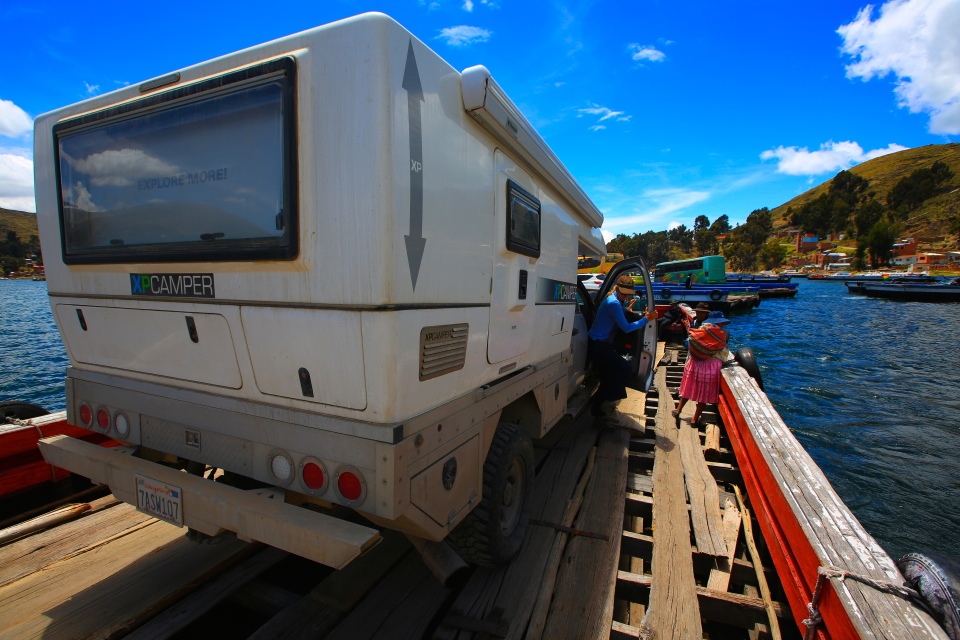
Normally I insist that the floor of the ferry is securely attached to the rest of the ferry, but in this case we decided to take a chance. If that bus can make, surely we can, right?
La Paz
The good news is that driving around La Paz wasn’t nearly as bad as I expected. We entered the city on Sunday morning and I had planned a route that avoided central La Paz. Traffic wasn’t bad and the GPS worked nearly perfectly. I was expecting a lot worse! Maybe all the driving practice I’ve had up to this point helped as well.
There aren’t many places to camp with your rig around La Paz, and nearly everyone we know ended up at Hotel Oberland (they have a small camping area for Overlanders). As we pulled in, we were happy to see our good friends Michael and Simone were there. Over the next few days we’d have a great time with them as we explored the city, stayed up late having BBQs, and knocking back a few beers.
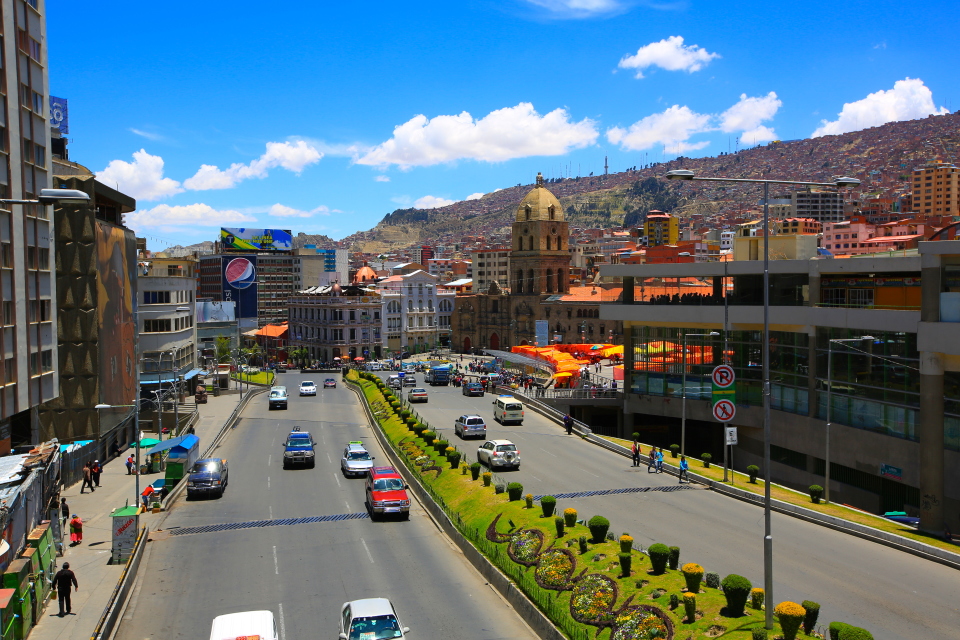
Traffic looks great in this picture, but this turns into a massive traffic jam in the morning and the evening.
Mercado de Hechiceria
We made our way to the Mercado de Hechiceria (witch’s market). This market sells medicinal herbs and other items for rituals used in Aymara (an indigenous culture) mysticism.
It was a slow day at the Mercado de Hechiceria when we were there — no one was really wandering around in the shops besides a few tourists.
Around La Paz
From the witch’s market, we just decided to get lost and explore more of the city. Here are some pictures of what we ran into:
Fenicular
We met Michael later on and decided to jump on the fenicular to getter some better views of the city. Technically, the fenicular was built as a means of transportation for those living in the city. In reality, it seems more of a tourist attraction. Supposedly the fenicular can only handle a tiny fraction of the commuters it would need in order to make any impact on the traffic.
Valle de la Luna
Another attraction we visited while in La Paz was the Valle de la Luna. Crazy rock formations in this valley are the result of erosion from the seasonal rains in La Paz. We spent a couple hours walking around here at sunset.
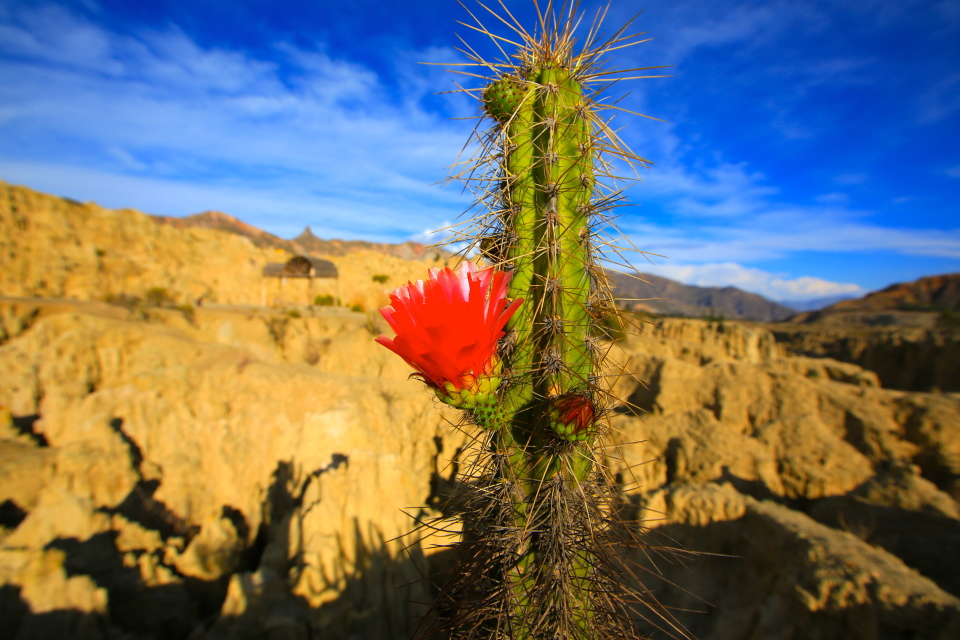
The cacti were in bloom when we visited the area and made for some stark contrasts against all the rocks.
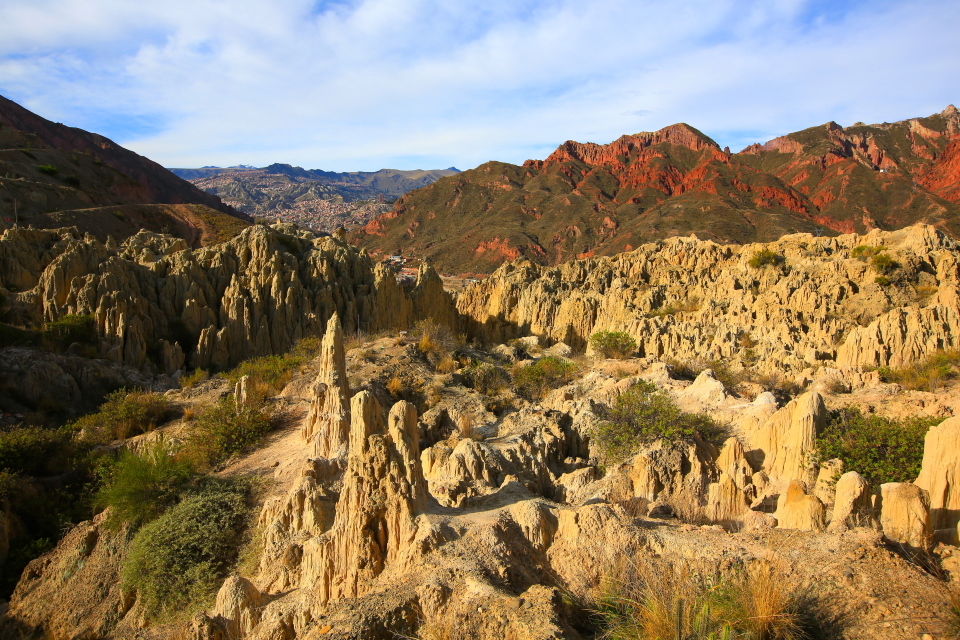
There were so many things to see from this spot — the city in the background, red cliffs in front of that, and the grey spires in the Valley of the Moon.
One of the things that we always love to see in each new area we visit is the different fashions. When we were in Cajamarca, Peru, we loved all the ten-gallon hats we saw. In Bolivia, the fashion was (and still seems to be) the bowler hat.
Up next: we take a break from La Paz to travel down the notorious Bolivian Death Road — on bikes! (Spoiler alert for our moms: we survived!)














